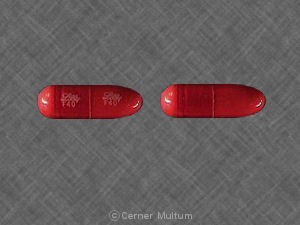Seconal Sodium and Alcohol/Food Interactions
There are 2 alcohol/food/lifestyle interactions with Seconal Sodium (secobarbital).
Secobarbital Alcohol (Ethanol)
Major Drug Interaction
GENERALLY AVOID: Concurrent acute use of barbiturates and ethanol may result in additive CNS effects, including impaired coordination, sedation, and death. Tolerance of these agents may occur with chronic use. The mechanism is related to inhibition of microsomal enzymes acutely and induction of hepatic microsomal enzymes chronically.
MANAGEMENT: The combination of ethanol and barbiturates should be avoided.
References (5)
- Gupta RC, Kofoed J (1966) "Toxological statistics for barbiturates, other sedatives, and tranquilizers in Ontario: a 10-year survey." Can Med Assoc J, 94, p. 863-5
- Misra PS, Lefevre A, Ishii H, Rubin E, Lieber CS (1971) "Increase of ethanol, meprobamate and pentobarbital metabolism after chronic ethanol administration in man and in rats." Am J Med, 51, p. 346-51
- Saario I, Linnoila M (1976) "Effect of subacute treatment with hypnotics, alone or in combination with alcohol, on psychomotor skills related to driving." Acta Pharmacol Toxicol (Copenh), 38, p. 382-92
- Stead AH, Moffat AC (1983) "Quantification of the interaction between barbiturates and alcohol and interpretation of fatal blood concentrations." Hum Toxicol, 2, p. 5-14
- Seixas FA (1979) "Drug/alcohol interactions: avert potential dangers." Geriatrics, 34, p. 89-102
Switch to consumer interaction data
Secobarbital High Blood Pressure (Hypertension)
Major Potential Hazard, Moderate plausibility
barbiturates IV - cardiovascular
The intravenous administration of barbiturates may produce severe cardiovascular reactions such as bradycardia, hypertension, or vasodilation with fall in blood pressure, particularly during rapid infusion. Parenteral therapy with barbiturates should be administered cautiously in patients with hypertension, hypotension, or cardiac disease. The intravenous administration of barbiturates should be reserved for emergency treatment of acute seizures or for anesthesia.
References (5)
- (2001) "Product Information. Phenobarbital (phenobarbital)." Lilly, Eli and Company
- American Medical Association, Division of Drugs and Toxicology (1994) "Drug evaluations annual 1994." Chicago, IL: American Medical Association;
- (2001) "Product Information. Amytal Sodium (amobarbital)." Lilly, Eli and Company
- (2001) "Product Information. Nembutal Sodium (pentobarbital)." Abbott Pharmaceutical
- (2001) "Product Information. Seconal Sodium (secobarbital)." Lilly, Eli and Company
Switch to consumer interaction data
Seconal Sodium drug interactions
There are 612 drug interactions with Seconal Sodium (secobarbital).
Seconal Sodium disease interactions
There are 13 disease interactions with Seconal Sodium (secobarbital) which include:
- acute alcohol intoxication
- drug dependence
- liver disease
- porphyria
- rash
- respiratory depression
- cardiovascular
- prolonged hypotension
- adrenal insufficiency
- depression
- hematologic toxicity
- osteomalacia
- paradoxical reactions
More about Seconal Sodium (secobarbital)
- Seconal Sodium consumer information
- Check interactions
- Compare alternatives
- Reviews (13)
- Drug images
- Side effects
- Dosage information
- During pregnancy
- Drug class: barbiturates
- Breastfeeding
Related treatment guides
Drug Interaction Classification
| Highly clinically significant. Avoid combinations; the risk of the interaction outweighs the benefit. | |
| Moderately clinically significant. Usually avoid combinations; use it only under special circumstances. | |
| Minimally clinically significant. Minimize risk; assess risk and consider an alternative drug, take steps to circumvent the interaction risk and/or institute a monitoring plan. | |
| No interaction information available. |
See also:
Further information
Always consult your healthcare provider to ensure the information displayed on this page applies to your personal circumstances.


